Physics > Lab Experiment > Free-Fall Laboratory gizmo_answers. (All)
Free-Fall Laboratory gizmo_answers.
Document Content and Description Below
Respond to the questions and prompts in the orange boxes. Vocabulary: acceleration, air resistance, free fall, instantaneous velocity, terminal velocity, velocity, vacuum Prior Knowledge Questions ... (Do these BEFORE using the Gizmo.) 1. Suppose you dropped a feather and a hammer at the same time. Which object would hit the ground first? The hammer because it has much more mass then the feather 2. Imagine repeating the experiment in an airless tube, or vacuum. Would this change the result? If so, how? Yes, since there is no air resistance in the vacuum, they would fall at the same speed Gizmo Warm-up The Free-Fall Laboratory Gizmo allows you to measure the motion of an object in free fall. On the DESCRIPTION tab, check that the Shuttlecock is selected, the Initial height is 3 meters, and the Atmosphere is Air. 1. Click Play ( ) to release the shuttlecock. How long does it take to fall to the bottom? 0.9 seconds 2. Select the GRAPH tab. The box labeled h (m) should be checked, displaying a graph of height vs. time. What does this graph show? height decreases over time 3. Turn on the v (m/s) box to see a graph of velocity vs. time. Velocity is the speed and direction of the object. Velocity is also referred to as instantaneous velocity. Because the shuttlecock is falling downward, its velocity is negative. Does the velocity stay constant as the object drops? No 4. Turn on the (m/s/s) box to see a graph of acceleration vs. time. Acceleration is the rate at which the velocity changes over time. What does this graph show? acceleration starts at about -10 m/s/s Re Falling objects Get the Gizmo ready: ● Click Reset ( ). ● Select the DESCRIPTION tab. Question: What factors affect how quickly an object falls? 1. Observe: Drop each item through Air from a height of 3 meters. Record how long it takes to fall below. For the tennis ball, try to click Pause ( ) when it hits the ground. Shuttlecock Cotton ball Tennis ball Rock Pebble 0.9s 1.36s 0.81s 0.79s 0.8s 2. Form a hypothesis: Why do some objects fall faster than others? some objects fall faster because some of them have a bigger mass which makes them fall faster 3. Predict: A vacuum has no air. How do you think the results will change if the objects fall through a vacuum? the objects will probably fall faster 4. Experiment: On the Atmosphere menu, select None. Drop each item again, and record the results below. Shuttlecock Cotton ball Tennis ball Rock Pebble 0.78s 0.78s 0.78s 0.78s 0.78s 5. Analyze: What happened when objects fell through a vacuum? Every object fell at the same speed in the vacuum 6. Draw conclusions: Objects falling through air are slowed by the force of air resistance. Which objects were slowed the most by air resistance? Why do you think this is so? [Show More]
Last updated: 1 year ago
Preview 1 out of 6 pages

Reviews( 0 )
Document information
Connected school, study & course
About the document
Uploaded On
Aug 05, 2022
Number of pages
6
Written in
Additional information
This document has been written for:
Uploaded
Aug 05, 2022
Downloads
0
Views
98


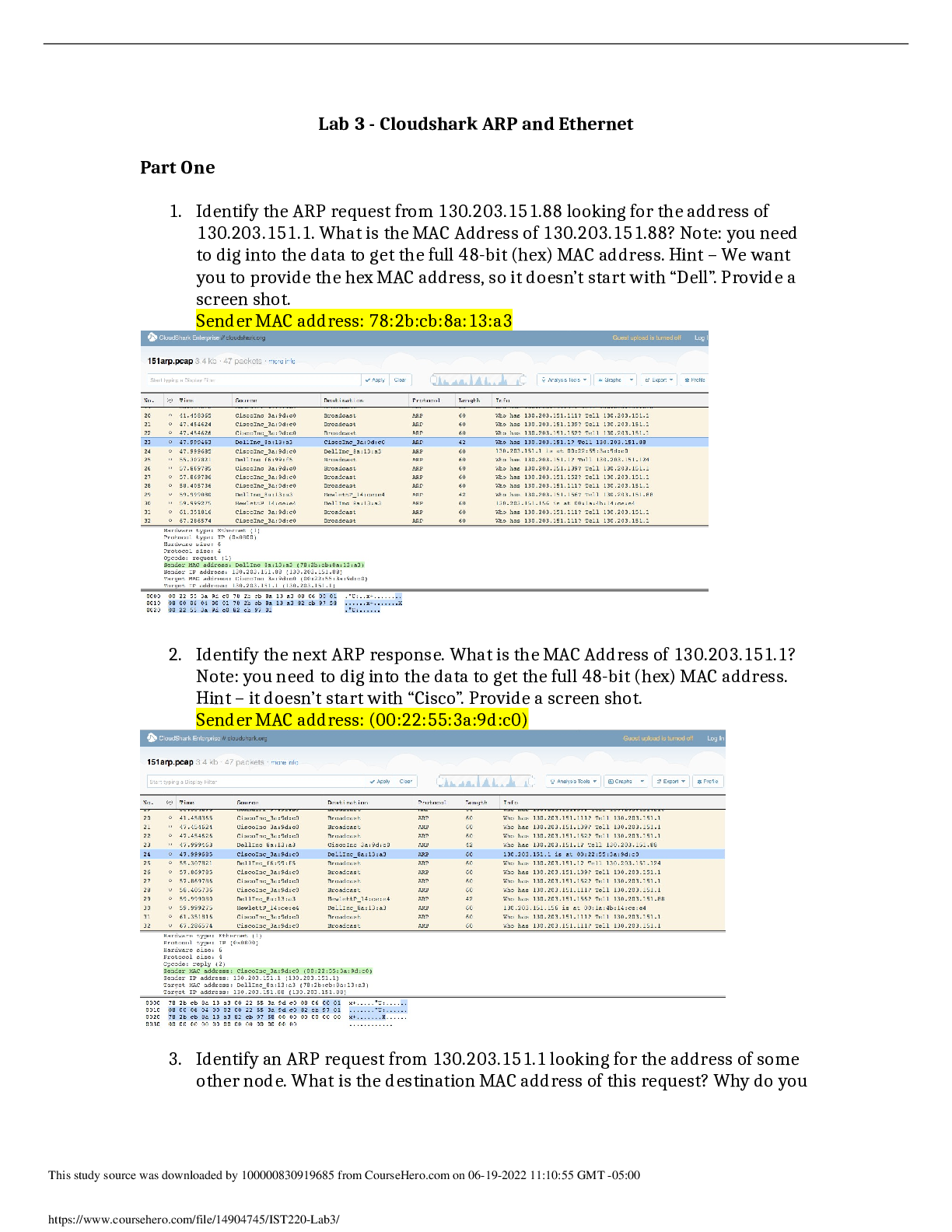
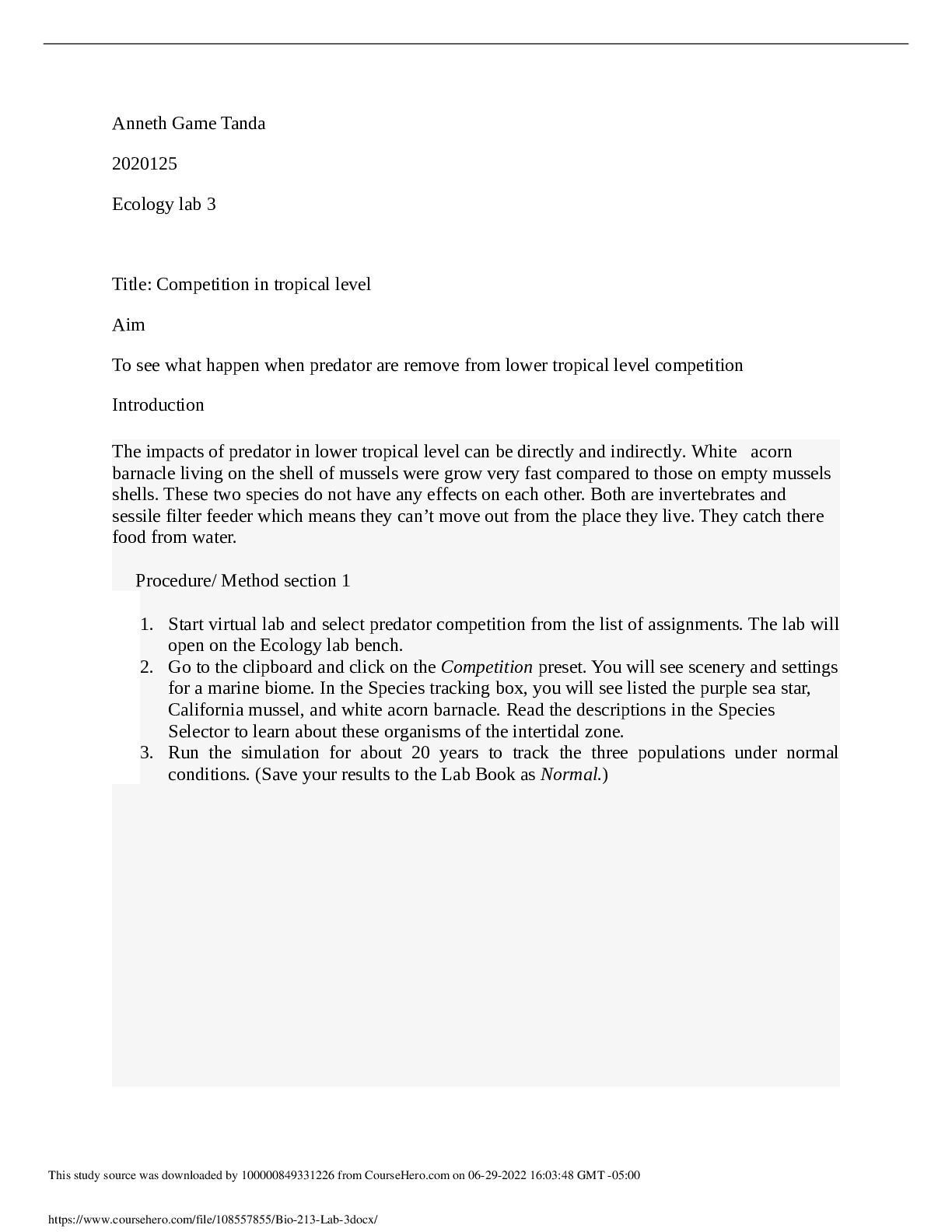
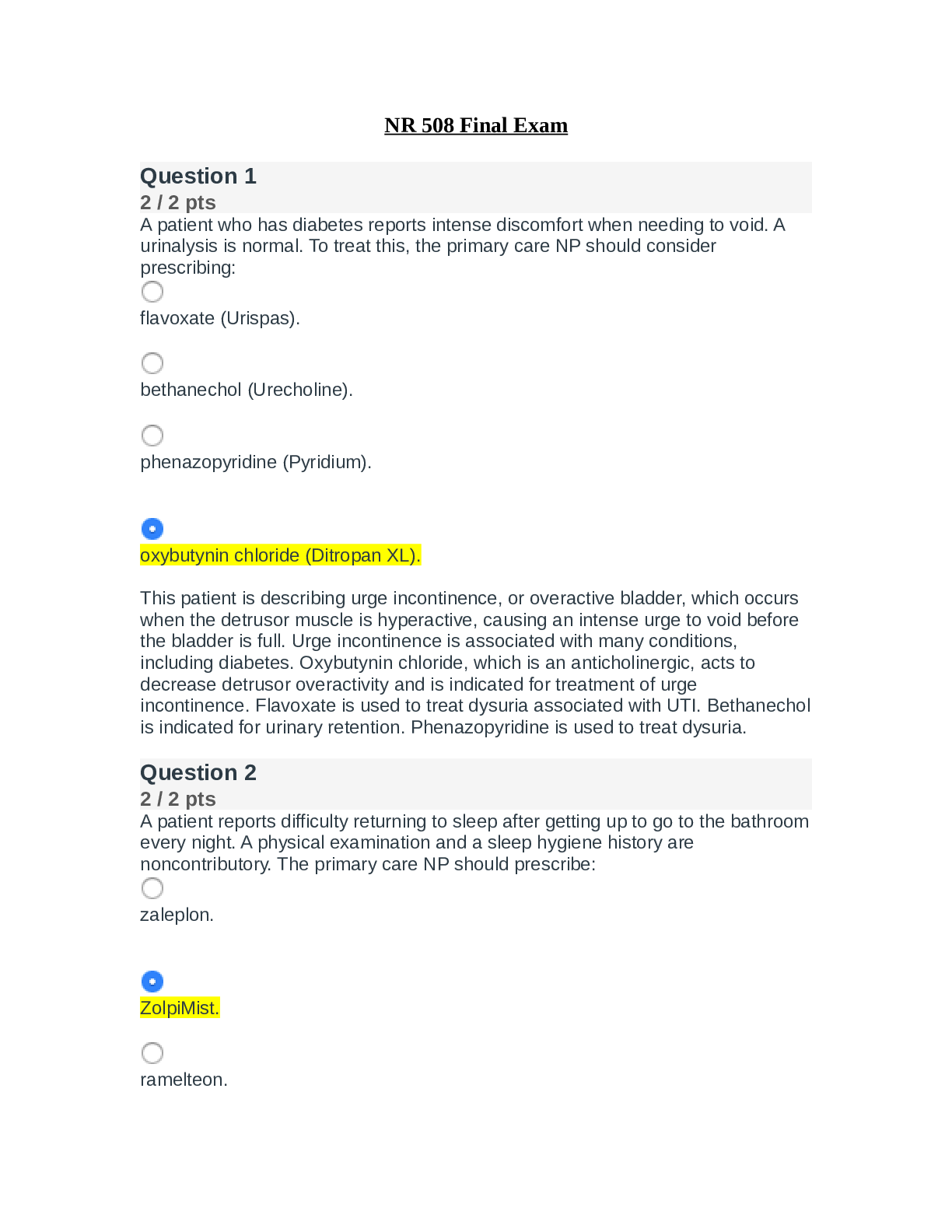




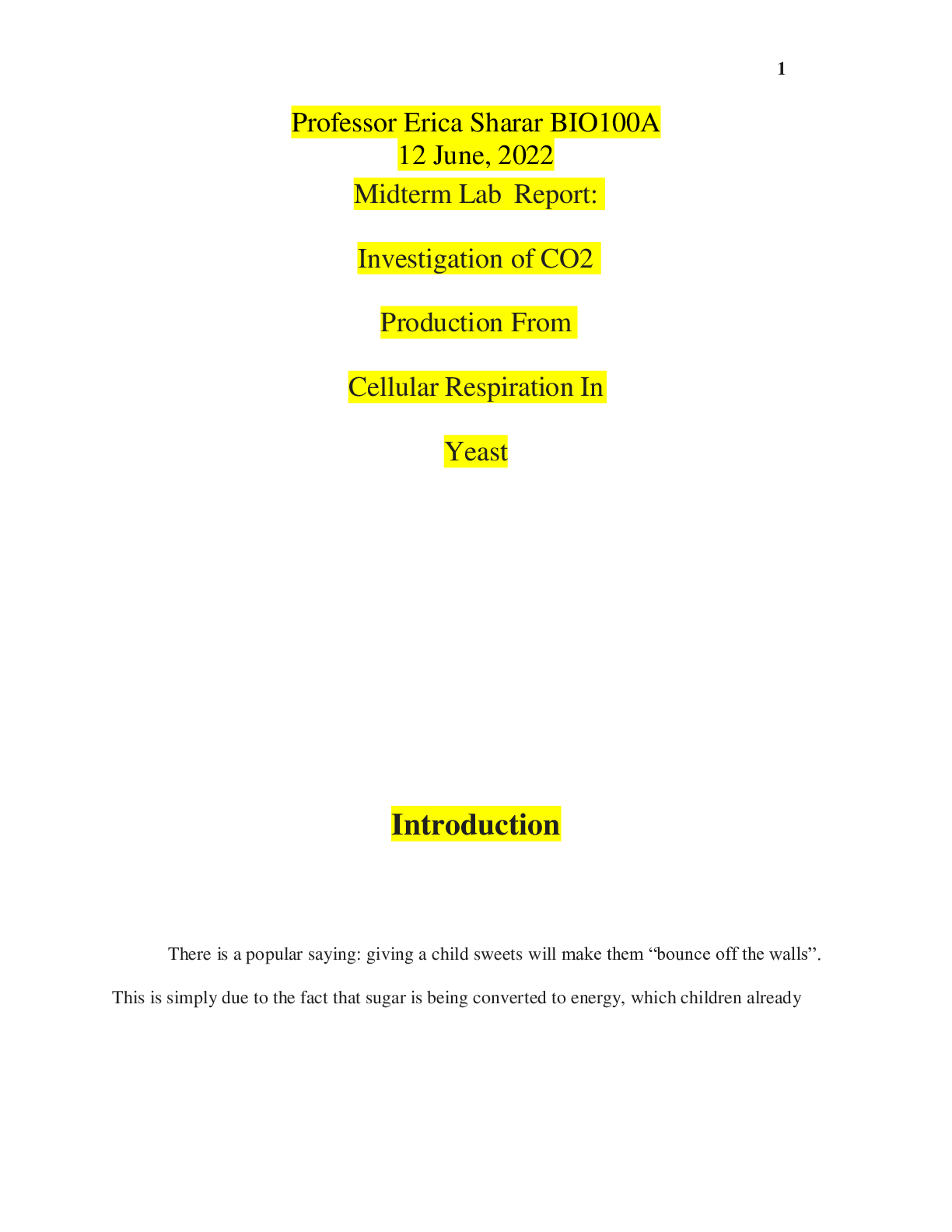


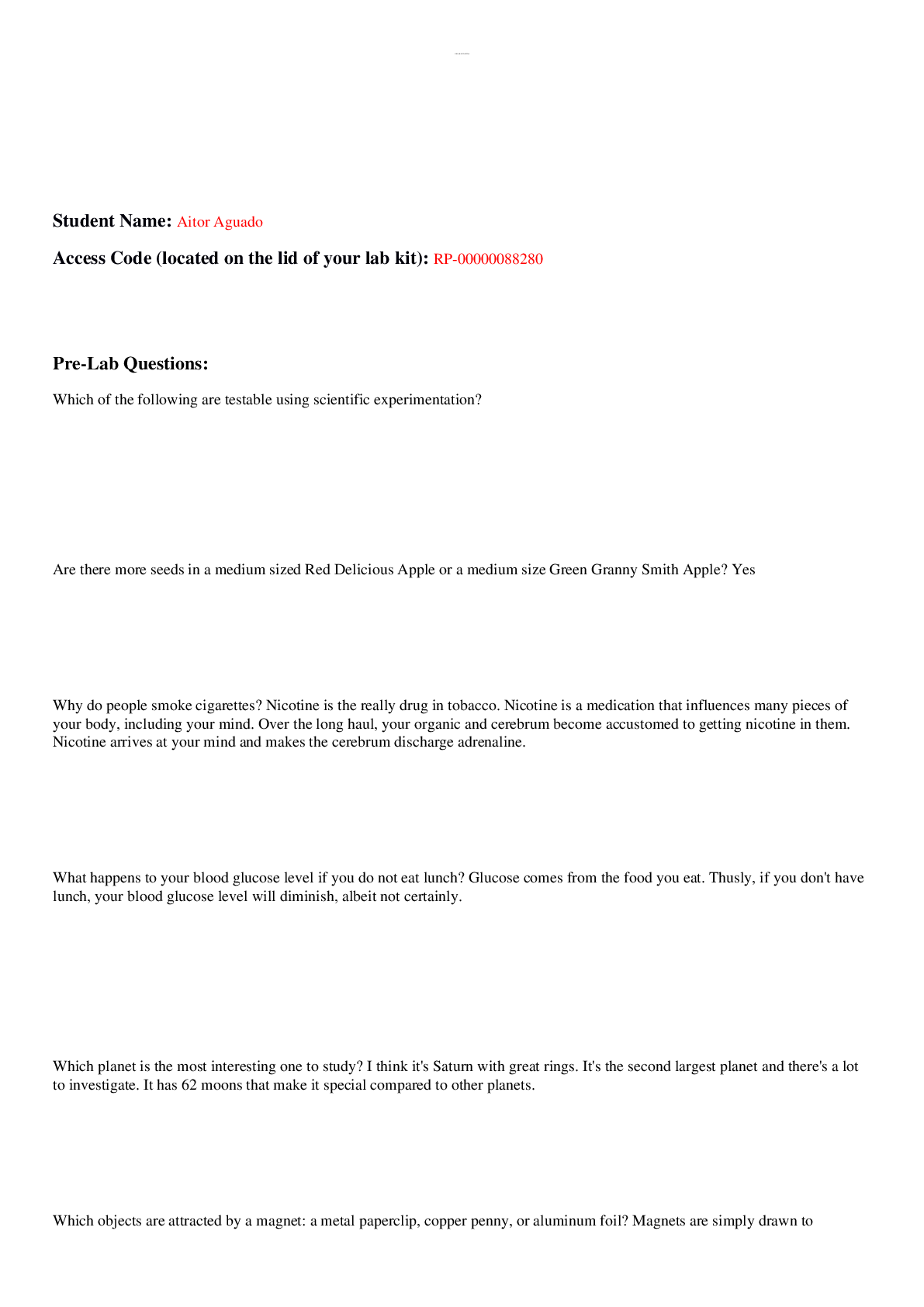
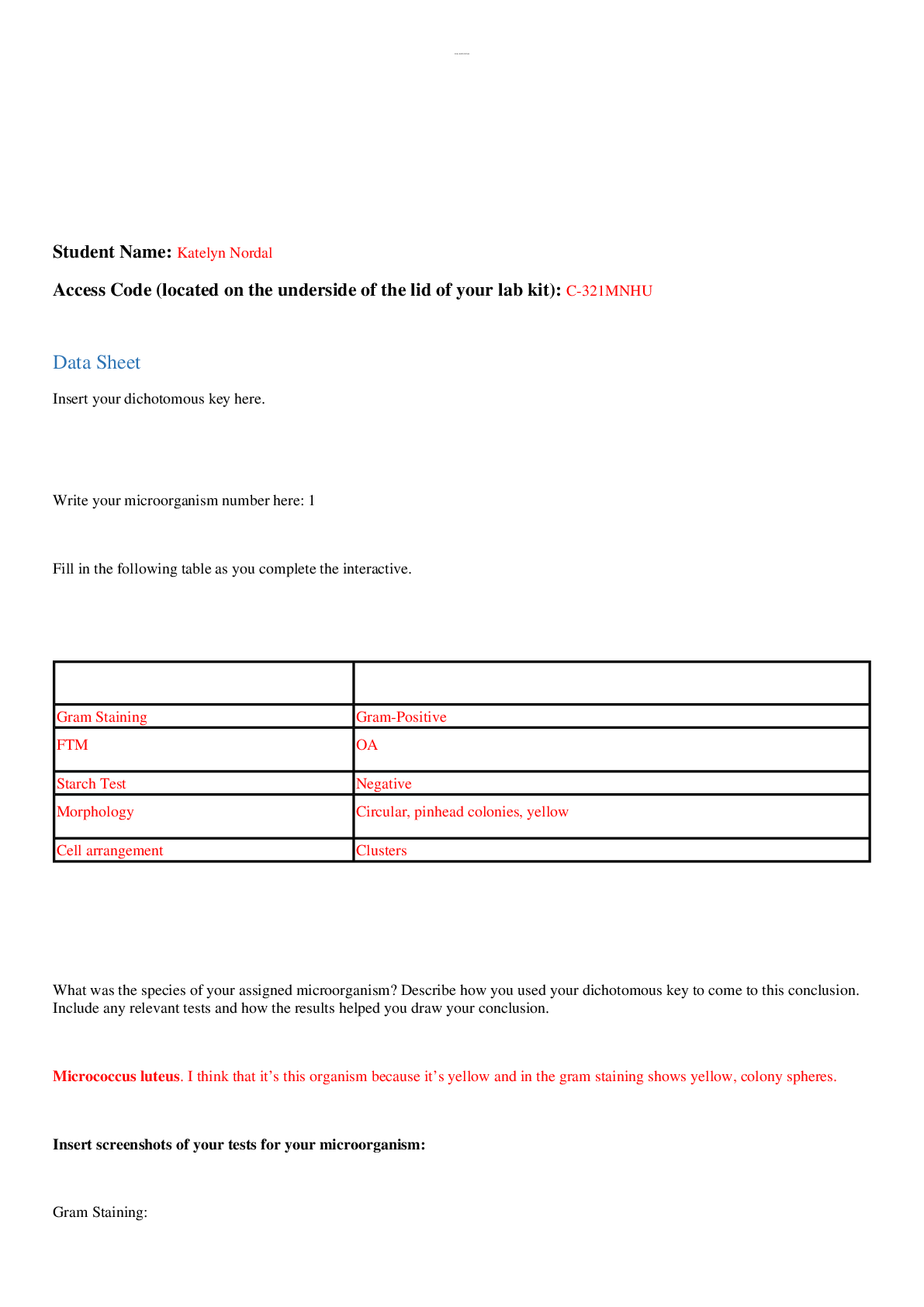


.png)







